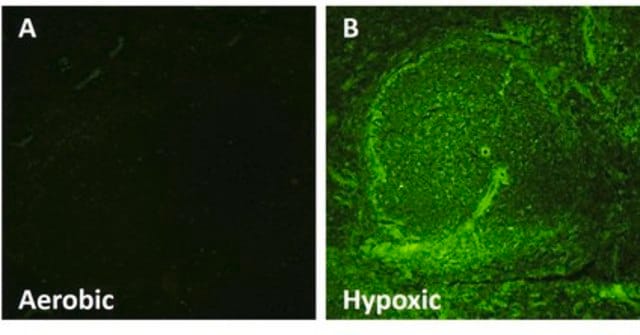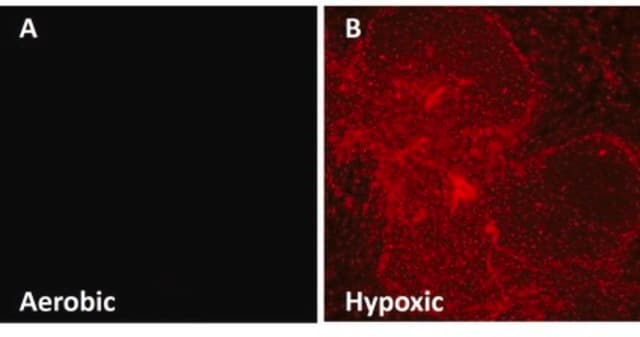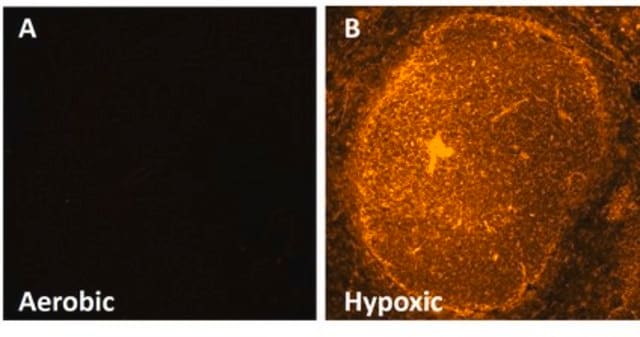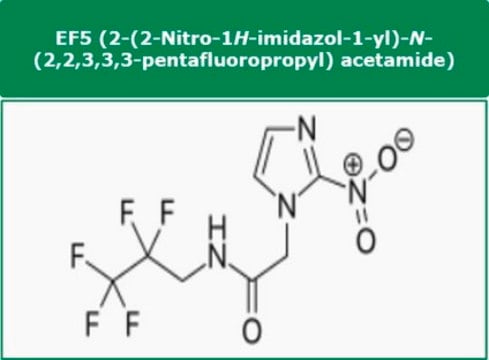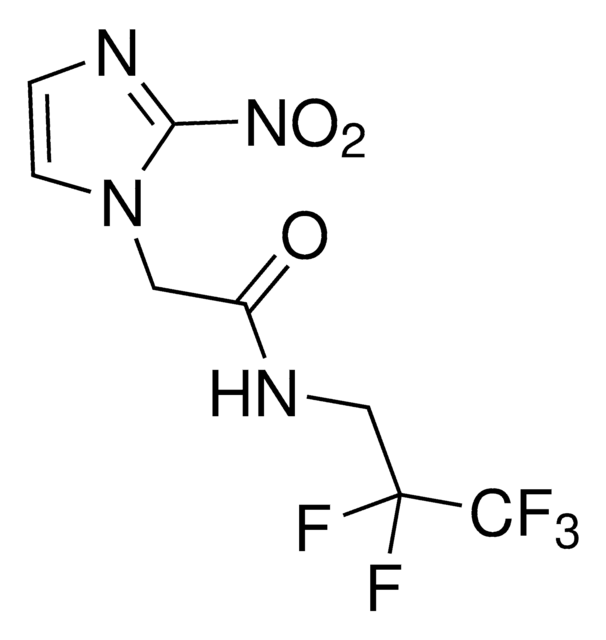EF5-30C3M
EF5 Hypoxia Detection Kit, Cyanine 3
Synonim(y):
Antibody-based EF5 detection
About This Item
Polecane produkty
metody
immunofluorescence: suitable
immunohistochemistry: suitable
Poziom jakości
metoda wykrywania
fluorometric
Opis ogólny
Advantages of the EF5 Hypoxia Detection Kit:
• EF5 exists in only one form:
Pimidozole, an alternative hypoxia marker, exists in two forms; one of which is charged and very hydrophilic, the other lipophilic. Pimidozole thus has a very complex biodistribution. In contrast, EF5 is lipophilic and uncharged and this allows very rapid and even tissue distribution.
• EF5 binding images can be calibrated to provide quantitative data on the pO2 values of each cell (Koch CJ, 2002):
The fluorescent images obtained from EF5 binding can be calibrated according to camera settings and a “cube-binding” value which is obtained through a separate procedure. The intensity values of calibrated images are directly related to actual tissue pO2 values. As a result, these images provide information regarding not only where hypoxic areas may or may not be, but also data regarding the distribution and levels of hypoxia.
Reference:
Koch CJ (2002) Measurement of absolute oxygen levels in cells and tissues using oxygen sensors and 2-nitroimidazole EF5. Methods in Enzymology 352: 3-31.
Zastosowanie
Cancer
Komponenty
Anti-EF5, clone ELK3-51 Cyanine 3 conjugate, 250 ug: (Part No. CS222730). 1 vial containing 125 uL mouse monoclonal antibody, provided at 2 mg/mL and formulated in PBS, 0.1% sodium azide, 30% glycerol and 1.5% BSA. Store at -20°C.
Przechowywanie i stabilność
Oświadczenie o zrzeczeniu się odpowiedzialności
Kod klasy składowania
10 - Combustible liquids
Certyfikaty analizy (CoA)
Poszukaj Certyfikaty analizy (CoA), wpisując numer partii/serii produktów. Numery serii i partii można znaleźć na etykiecie produktu po słowach „seria” lub „partia”.
Masz już ten produkt?
Dokumenty związane z niedawno zakupionymi produktami zostały zamieszczone w Bibliotece dokumentów.
Produkty
Hypoxia detection assays to measure oxygen levels in both live and fixed cells and tissues.
Testy wykrywania niedotlenienia do pomiaru poziomu tlenu zarówno w żywych, jak i utrwalonych komórkach i tkankach.
Nasz zespół naukowców ma doświadczenie we wszystkich obszarach badań, w tym w naukach przyrodniczych, materiałoznawstwie, syntezie chemicznej, chromatografii, analityce i wielu innych dziedzinach.
Skontaktuj się z zespołem ds. pomocy technicznej
